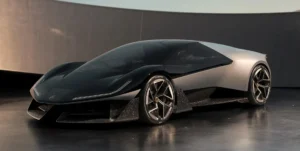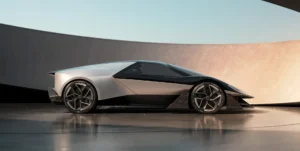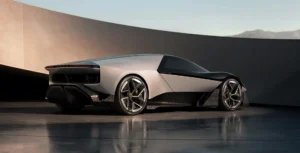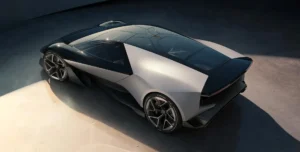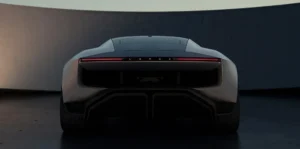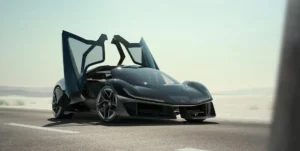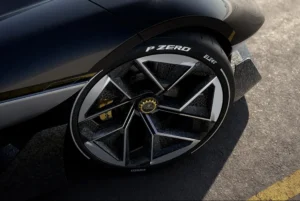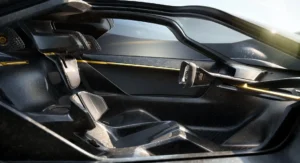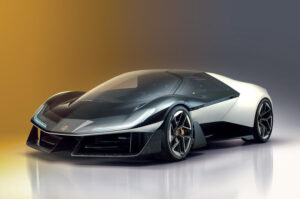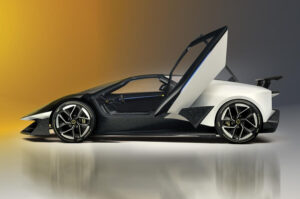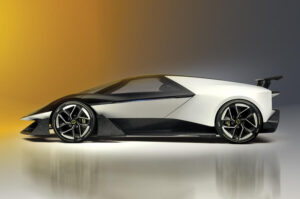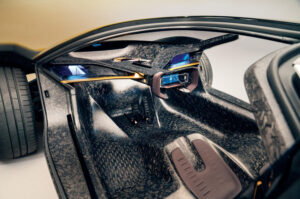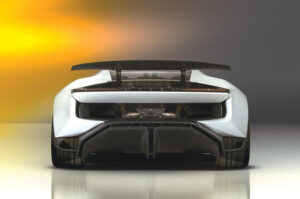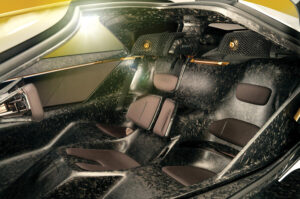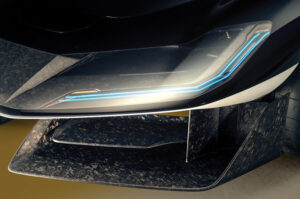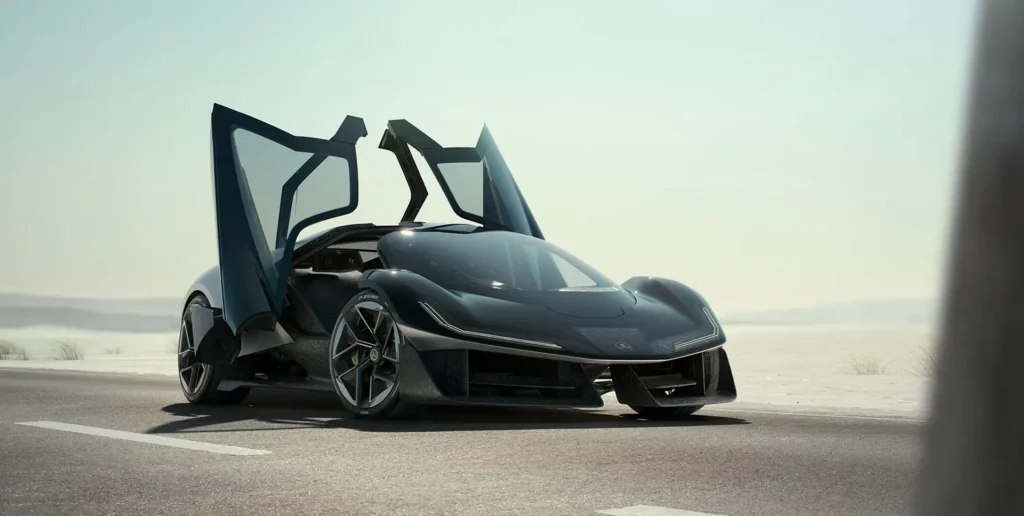
Lotus revealed the Theory 1 concept this week, signalling the design direction for future models, including a potential electric sports car successor to the Emira.
Drawing inspiration from Lotus’ rich history, the Theory 1 blends elements from the iconic Type 72 Formula 1 car, the long-running Esprit sports car, and the Eleven endurance racer. A central driving position reminiscent of the McLaren F1 adds a touch of legend, while dihedral doors with a unique rearward opening mechanism create a dramatic entrance.
Inside, minimalist design reigns supreme, reflecting Lotus founder Colin Chapman’s lightweight philosophy. Padded sections integrated into the car’s central carbon tub replace traditional seats, with headrest sections doubling as speaker housings.
Lotus hasn’t revealed the final weight but targets a sub-3,500-pound figure despite the electric drivetrain. This setup features a 70 kWh battery, dual-motor all-wheel-drive, and a peak output of 986 horsepower (735 kW). While not quite matching the Evija hypercar’s power, the Theory 1 boasts impressive performance with a 0 to 100 km/h (62 mph) time of under 2.5 seconds, a 200 mph (322 km/h) top speed, and a 250-mile (402 km) range.
Advanced technology includes active aerodynamics, retractable cameras and sensors for a self-driving system, and Pirelli P Zero Elect tyres. These tyres, designed specifically for electric vehicles, prioritize high efficiency and noise reduction. A unique feature in the cabin is the “reactive textile” – a surface with on-demand buttons that appear only when needed.
Production plans for the Theory 1 remain unconfirmed, but elements are likely to influence future Lotus models like the Emira’s electric successor. This new sports car, codenamed Type 135, is currently expected in 2027, though delays are a possibility.

